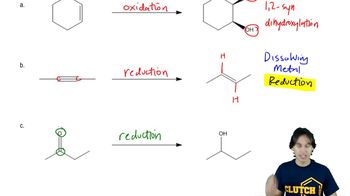Multiple Choice
Predict the major, organic product for the following reaction.
 Verified step by step guidance
Verified step by step guidance Verified video answer for a similar problem:
Verified video answer for a similar problem:



 2:07m
2:07mMaster Why LiAlH4 doesn't work with a bite sized video explanation from Johnny
Start learning